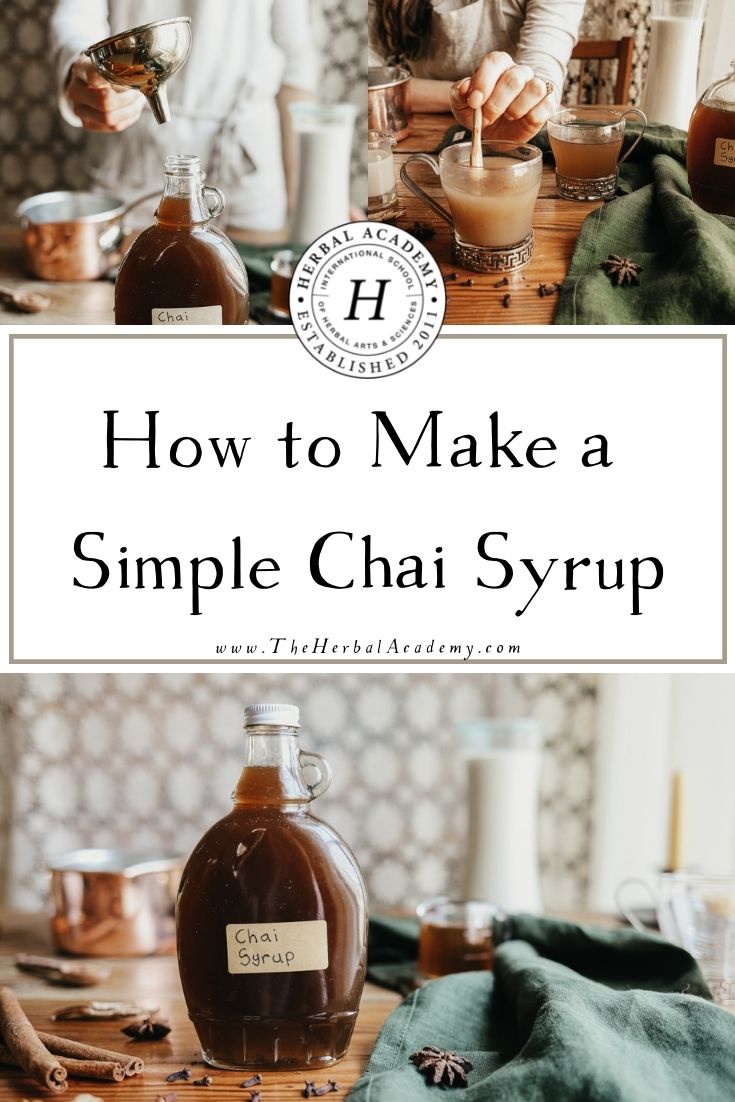
How to Make a Simple Chai Syrup
I love any opportunity to share the richness of relationships with plants and have always felt that handmade gifts are the most precious. There’s nothing like gifting friends and family your time and energy, packaged up, with handwritten labels, just brimming with love. This is why for Christmas this year I am offering a little warmth to my loved ones through a warming chai syrup.
Chai is one of my favorite hot beverages, one reason being its deeply warming effect on the body. The sensation of holding a hot cup of chai in your hands, and the inside-out warming effect that follows every sip, are simple pleasures that a person can rely on in long cold winter months. I have been playing with this recipe for the last couple of years, and after many months of experimentation now feel like it is good enough to qualify for gifting this season.
While I loved the idea of sending everyone a little sachet with the whole herbs to steep, it’s hard to know if my friends and family will have the time or inclination to decoct chai from whole herbs. How was I going to get this delightful herbal beverage into the hands of my loved ones in a way in which I could be almost positive they would use?
After a bit of thinking, I came up with the idea for a chai syrup. One day as I was pondering my coffee order, going back and forth between a chai or breve, I began to think about how most places use a chai syrup recipe rather than chai brewed from dried herbs and tea leaves. I internally lamented that most of those syrups are artificially flavored, so people aren’t getting all the benefits they could from this beverage.
Boom! That’s it! I could make a chai syrup recipe. That would be a convenient way for my family and friends to enjoy this beverage, while still delivering the benefits of a true brew. Certainly, everyone could enjoy chai syrup. The versatility makes it accessible and enjoyable for a wide range of uses, whether it’s added to warm water, milk, morning coffee, or evening cocktails.
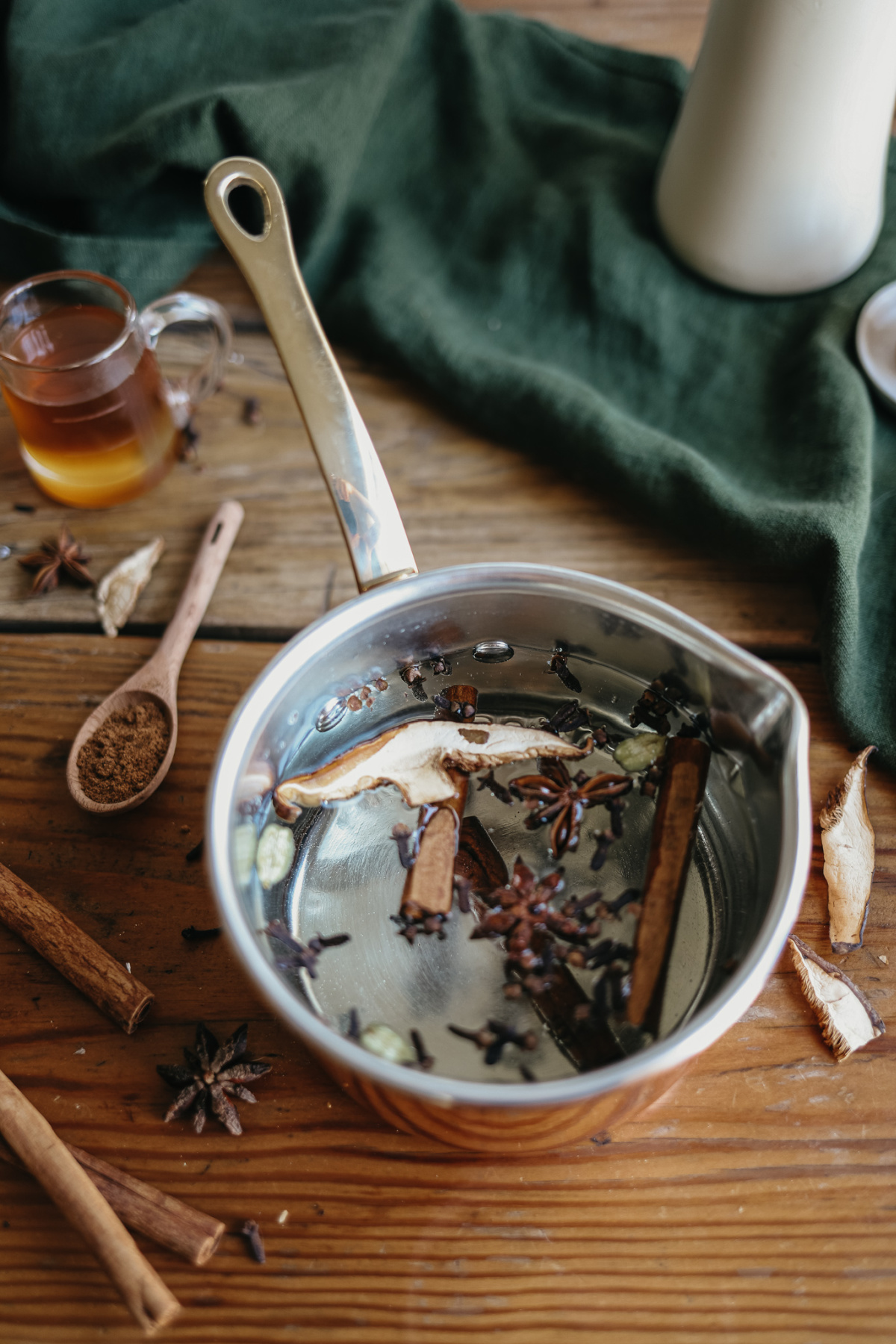
Benefits of the Brew
Chai is a brew made primarily of aromatic herbs. Aromatic spices often have a stimulating effect on the systems of the body, hence the lasting warmth that a cup of chai creates. However, there is a whole lot more to this brew than the buzz.
- Clove (Eugenia caraphyllata) is a stimulating carminative.
- Cinnamon (Cinnamomum vernum) is a warming stimulant herb.
- Cardamom (Eletteria cardomomum) is a digestive stimulant, carminative herb.
- Ginger (Zingiber officinale) is a circulatory stimulant.
- Nutmeg (Myristica fragrans) is a carminative, and stimulant herb.
- Black tea (Camellia sinensis) delivers caffeine, and the tannins give a bitter earthy contrast to the warming, savory, pungent spices.
(Chevalier, 2000)
The combination of these herbs stimulates the circulatory and digestive systems, soothes digestive complaints, and aids the immune system. In Ayurveda, chai is said to balance and calm all constitutional types (Lad et al., 1997). If you visit Northern India, you will see masala chai served by street vendors, streetside cafes, in most restaurants, and in the home.
When you combine all of these benefits with the arousing scent and sensual delight of drinking chai, it’s easy to see how this aromatic spiced beverage has gained worldwide popularity. It is a wonderful feeling of synergy when doing something good for yourself is entirely indulgent as well.
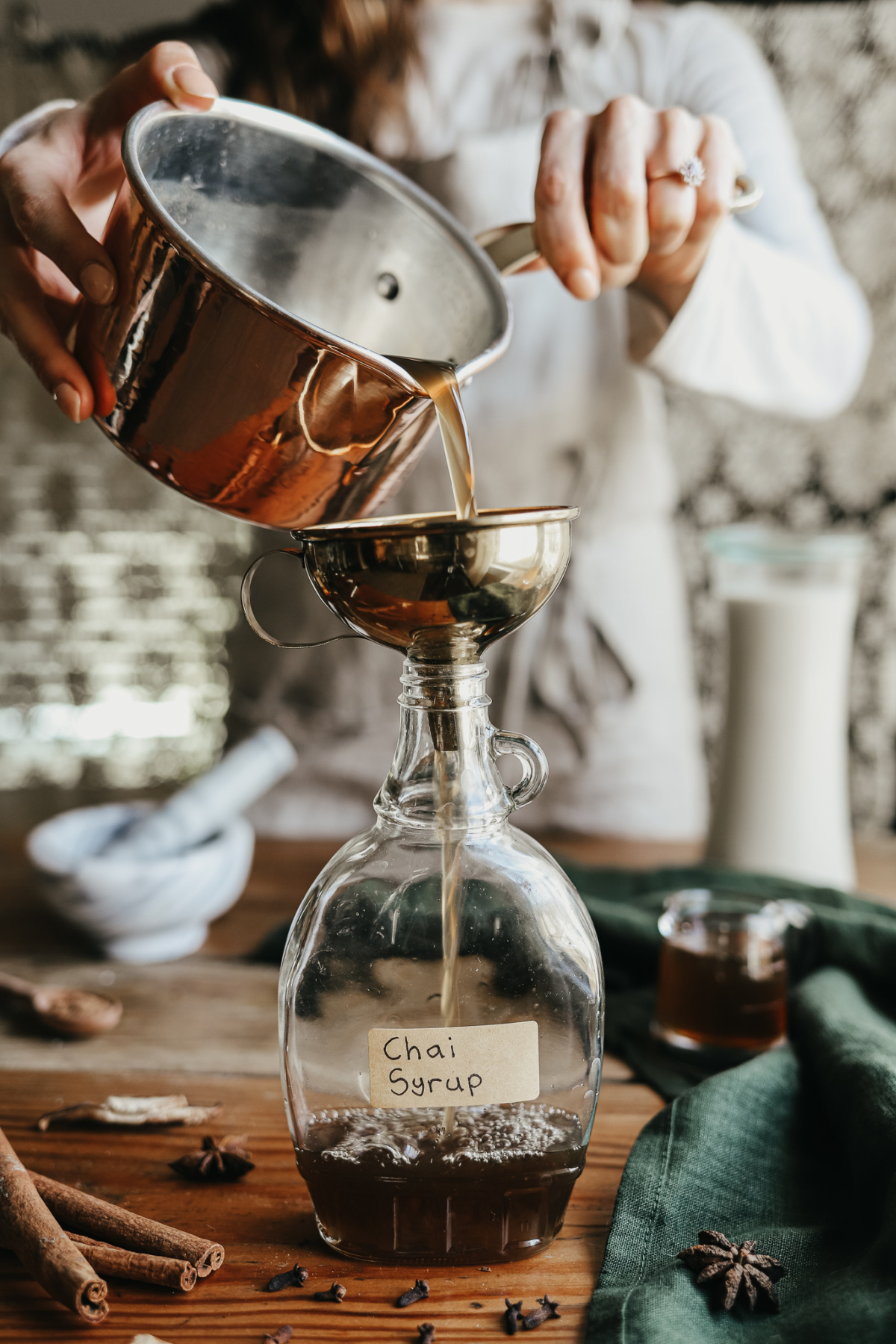
A Little Extra Something for Your Chai Recipe
When I first began to make chai in my kitchen I wondered what caffeine-free version I could make for the evening. How might I replace the earthy and bitter black tea with other herbs? I wanted to find something that would provide the same earthy and tannic base note for the symphony of aromatics while at the same time adding benefits to the brew.
Reishi (Ganoderma lucidum) mushroom has been my favorite substitution for black tea so far. The tough fruiting body of the reishi mushroom offers an earthy and somewhat bitter, tannic quality to the spicy chai flavors. In addition, this adaptogenic fungi boasts many benefits.
Reishi mushrooms have long traditional use and have been studied for their ability to help regulate the immune system, for their antioxidant content, and their ability to help the body fight infections and cancer (Benzi et al, 2011).
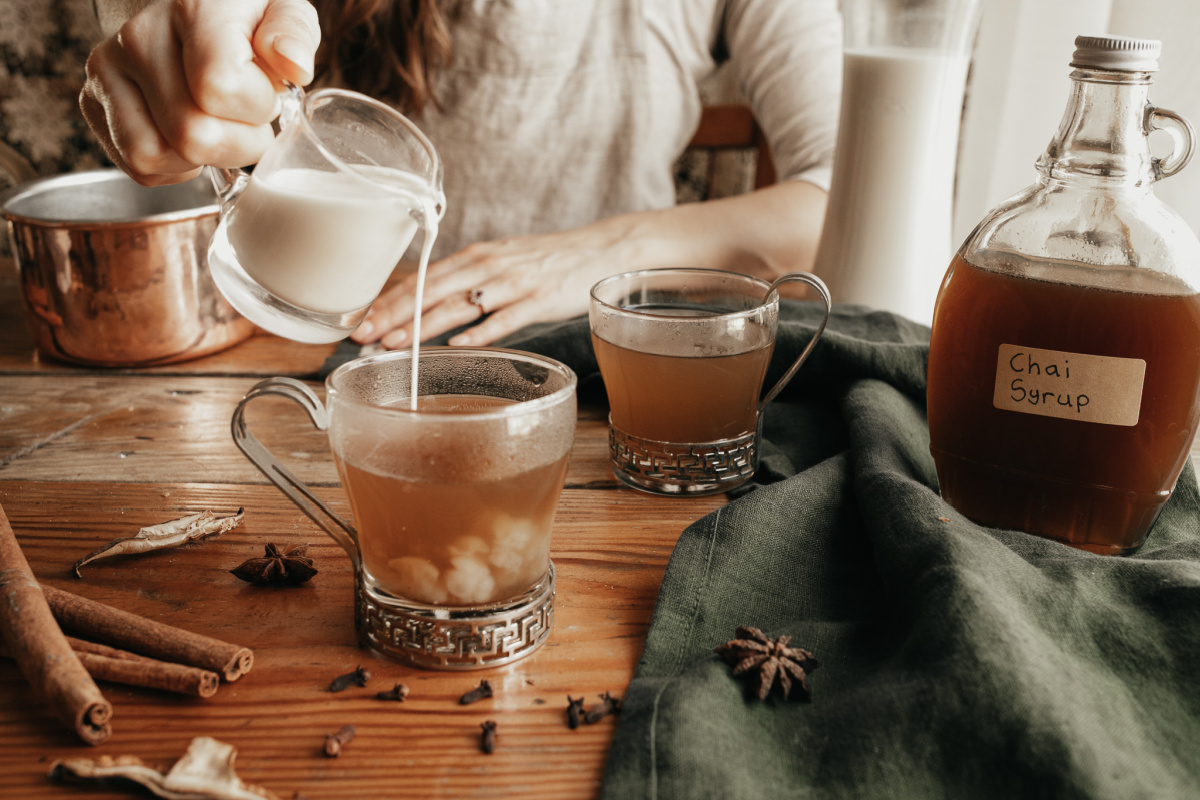
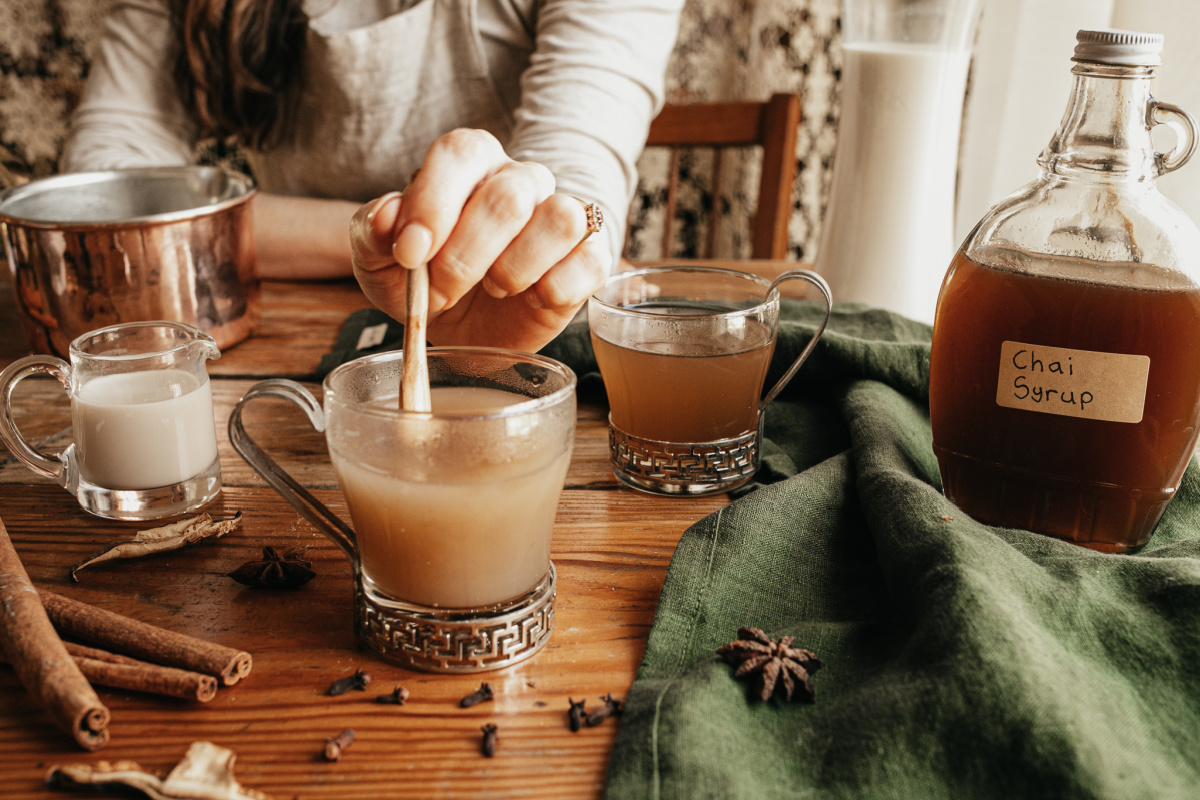
The Chai Syrup Recipe
I wanted to create a chai syrup recipe that maintained a spicy punch amidst the sweetness of a syrupy delivery. First I thought just simply cutting the amount of water it was brewed with would allow the pungency of the spices to come through, but sweetness still prevailed over pungency.
Going back to when I first started experimenting with this brew, I went to work adjusting the ratio of spices for this chai recipe. I took notes on each batch until I was pleased with the final product. It took a few tries, but since I got to enjoy the outcome of each experiment it made the trial and error entirely bearable. Here’s what I finally landed on.
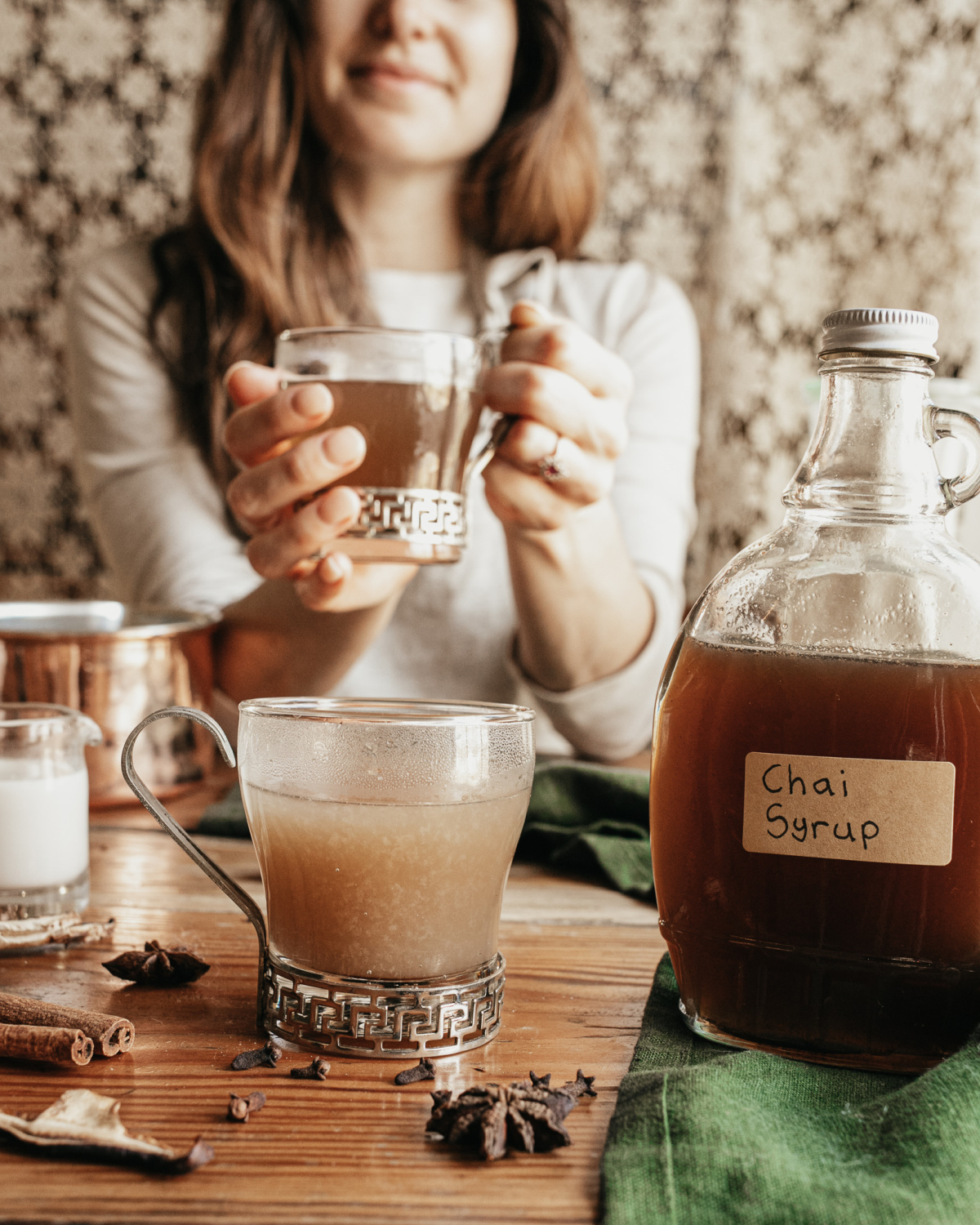
3 cinnamon (Cinnamomum vernum) sticks This chai syrup recipe is a great way to get the benefits of this brew into daily life. Whether you are adding it to your morning coffee, oatmeal, or favorite milk, you’re sure to enjoy the exciting flavors this syrup will deliver. Also, if you love to give handmade gifts, this is a wonderful holiday gift option.
REFERENCES
Benzi, I.F.F., & Wachtel-Galor, S. (Eds.). (2011). Herbal Medicine: Biomolecular and Clinical Aspects (2nd ed.). Boca Raton, FL: CRC Press.
Chevallier, A. (2000). Encyclopedia of herbal medicine: The definitive reference to 550 herbs and remedies for common ailments. New York, NY: Dorling Kindersley.
Lad, U., & Lad, V. (1997). Ayurvedic cooking for self-healing (2nd ed.). Albuquerque, NM: The Ayurvedic Press.
Chai Syrup Recipe
This chai syrup recipe is a great way to get the benefits of this brew into daily life and makes a wonderful holiday gift option.
1 star anise (Illicium verum)
20 whole clove (Eugenia caraphyllata) buds
4 inches fresh ginger (Zingiber officinale) rhizome, chopped
3 cardamom (Eletteria cardomomum) pods, opened
¼ teaspoon ground nutmeg (Myristica fragrans)
3 Reishi (Ganoderma lucidum) mushroom dried strips
2 cups water
In Closing,
